![]() Unearthing Neve Sha’anan
Unearthing Neve Sha’anan
Spring 2020
Columbia
University Graduate School of Architecture, Planning and Preservation
Urban Design Studio
Location
Tel Aviv-Yafo, Israel
City Scale
Critics
Kate Orff; Lee Altman, Adriana Chavez, Dilip da Cunha, Fitsum Gelaye, Geeta Mehta, Thad Pawlowski, Julia Watson
Team
Niharika Shekhawat, Antonia Medina Abell, Candelaria Mas Pohmavich, Shailee Shah
Unearthing Neve Sha’anan is about its marginalized community and buried natural assets. The goal is to celebrate the transitional character of Neve Sha’anan. Building on the efforts of its community, we will develop a path to residency and civic participation through a Neve Sha’anan Action Lab.
Neve Sha’anan is located between the ancient city of Jaffa and the wealthier north Tel Aviv. The neighborhood has a unique character of transition, emphasized by the location of the Central Bus Station. It is home to migrant workers and asylum seekers from Eritrea and Sudan, who reside in a liminal state. Their “in-betweenness” is deemed as negative by the city that is unable to meet their needs. Therefore, our project aims to empower the neighborhood by daylighting its marginalized community and its buried assets.
Neve Sha’anan is located between the ancient city of Jaffa and the wealthier north Tel Aviv. The neighborhood has a unique character of transition, emphasized by the location of the Central Bus Station. It is home to migrant workers and asylum seekers from Eritrea and Sudan, who reside in a liminal state. Their “in-betweenness” is deemed as negative by the city that is unable to meet their needs. Therefore, our project aims to empower the neighborhood by daylighting its marginalized community and its buried assets.

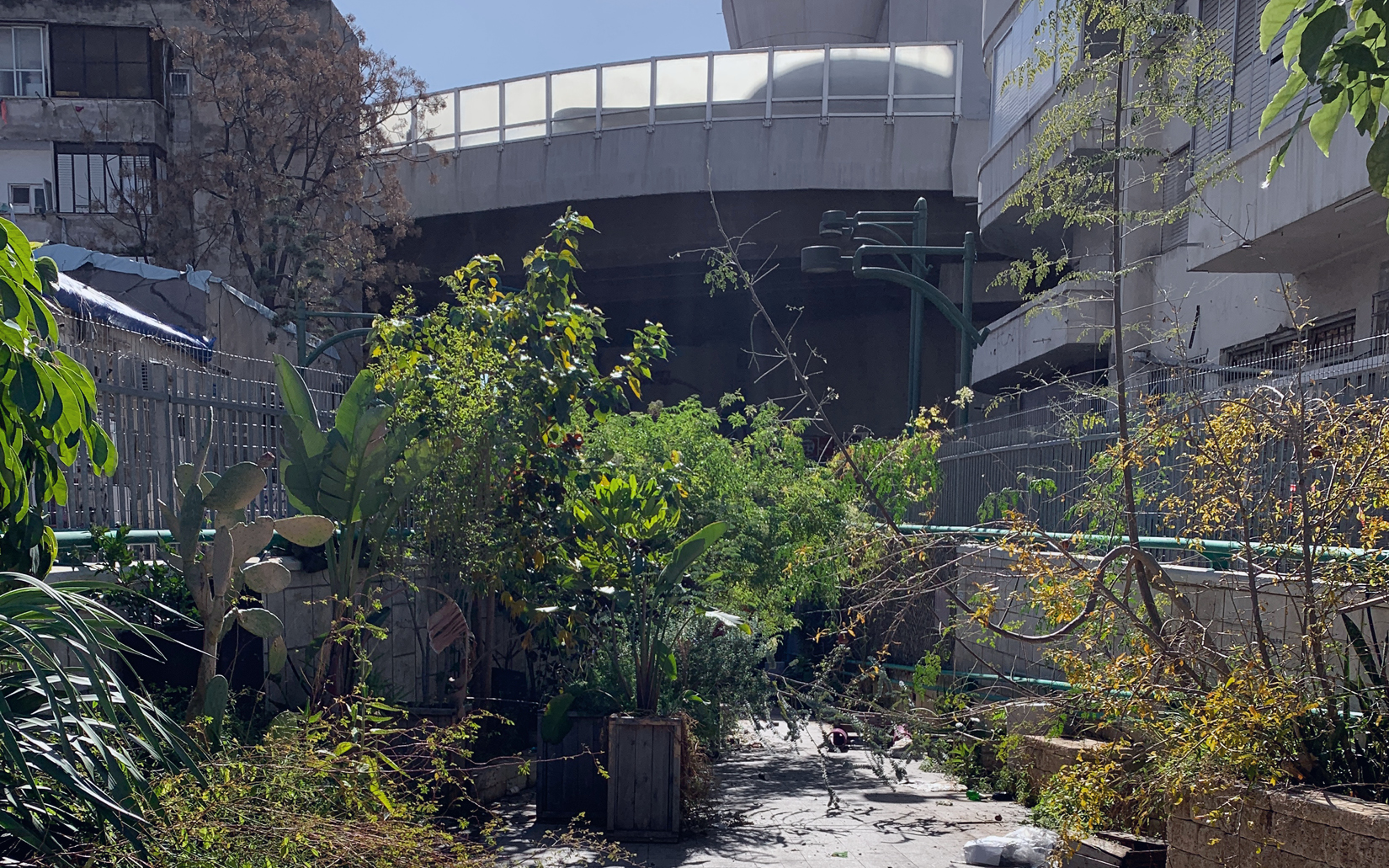
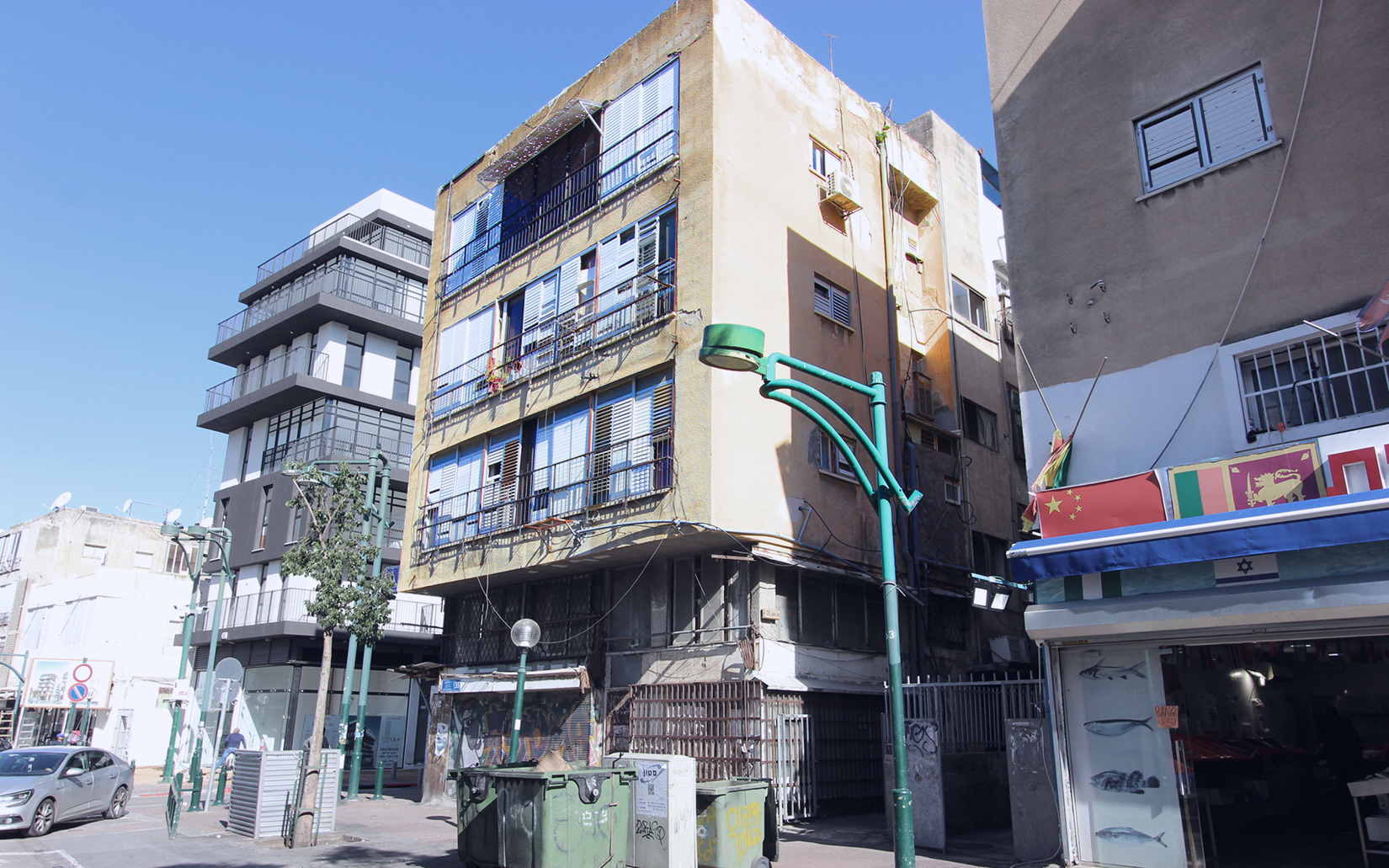
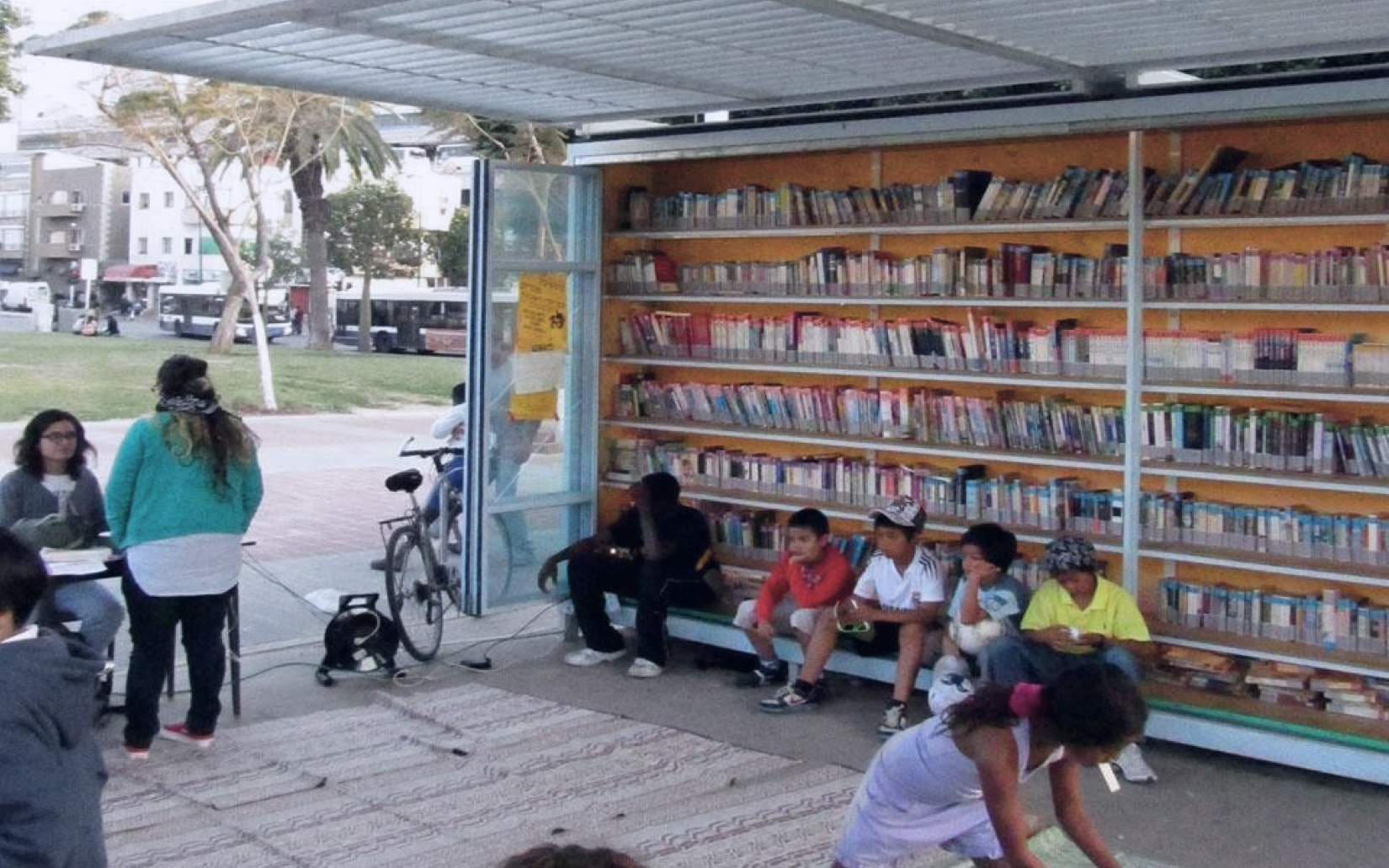
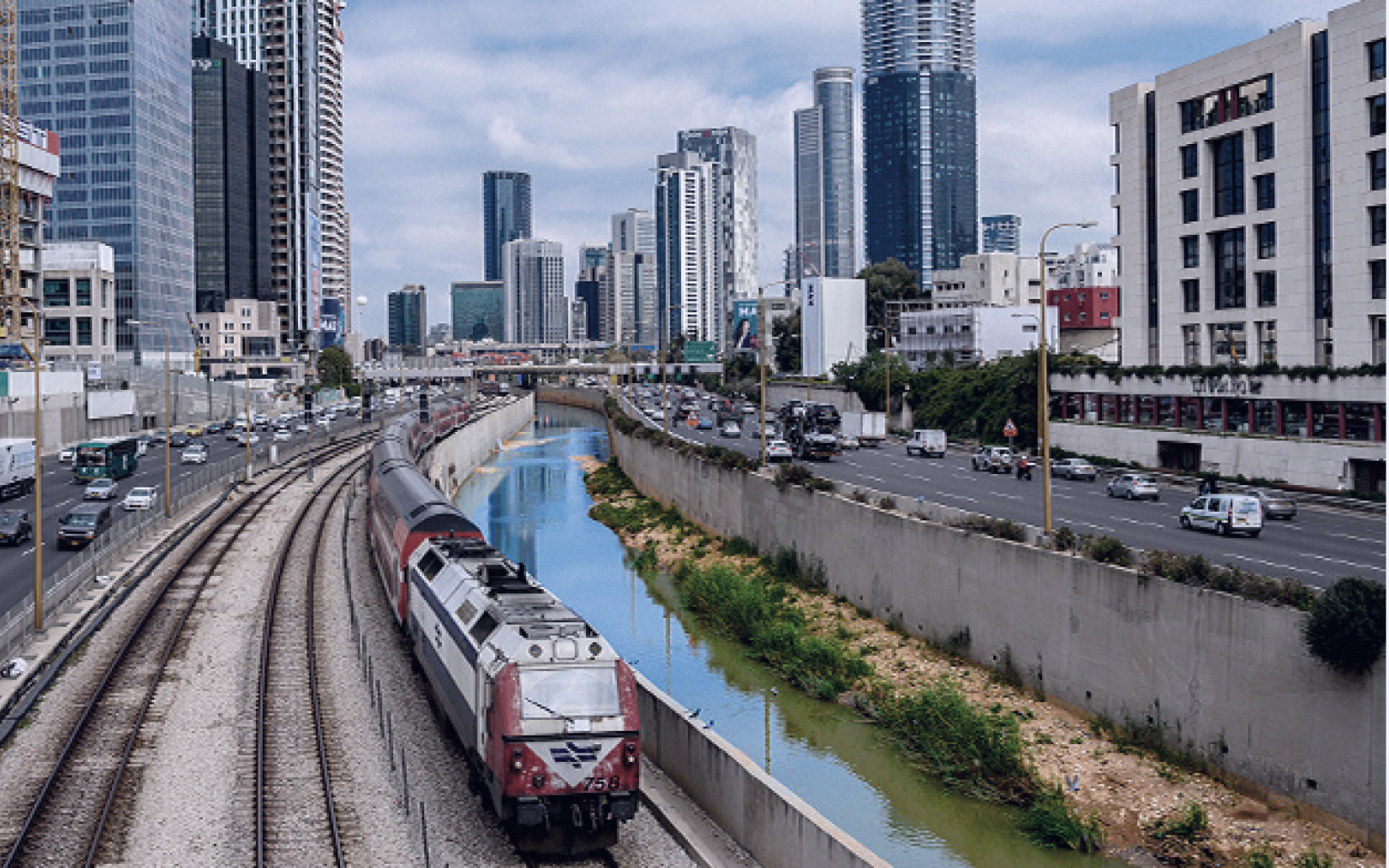
The migrant workers, asylum seekers and the Ayalon are perceived as the two migrants of Tel Aviv-Yafo. Both people and water are contained between bureaucratic boundaries of legality and channeling. They are siloed behind the facades of Neve Sha’anan and the walls of the Ayalon Highway. In 2012, there was an immigration surge which resulted in 40,000 refugees residing in Neve Sha’anan. Tel Aviv experiences extreme fluctuations of drought and flood conditions throughout the year. We will work with water and people to empower them through collaborative urban design.

Both people and water are contained between bureaucratic boundaries of legality and channeling. They are siloed behind the facades of Neve Sha’anan and the walls of the Ayalon Highway
Neve Sha’anan is a vibrant, diverse and culturally-rich migrant neighborhood. During our visit, we witnessed a strong close-knit community and interviewed residents of Neve Sha’anan. They highlighted the history of family owned businesses and the recent pedestrianization of HaAliyah Street that changed the character of the area. It is crucial to preserve the identity of the neighborhood,empowering both existing and new residents through civic participation. The existing social fabric of Neve Sha’anan consists of approx. 40,000 migrant workers and asylum seekers. Due to their lack of legal status, the community is unable to celebrate their presence in the neighborhood and reside in vulnerable conditions. We interviewed Gina Walker from the United Nations High Commissioner for Refugees and she stated: “They don’t have legal status. They have to live in survival mode.” Together with the support of local organizations, they have strengthened their own grassroots network of solidarity, providing services to the rest of the city through jobs in healthcare, hospitality and restaurant businesses.

New development projects for the Ayalon and Neve Sha’anan focus on market driven building renovations and the construction of a 2 billion dollar park over the highway, displacing the people, burying the river and draining it into a pipeline. We oppose this development because it is destructive to the fabric and livelihood of Neve Sha’anan’s immigrant and refugee community as well as the neighborhood’s older residents, while undermining the ecology of the city. Instead, we propose a Neve Sha’anan Action Lab that will mediate between the Municipality and the neighborhood for future development, to empower its community and celebrate ecology.
![]()
Neve Sha’anan Action Lab is an incremental initiative that builds on the existing efforts of the community. It connects residents and municipal stakeholders to create empowering public spaces. This public-private partnership supports the migrant workers and asylum seekers of Neve Sha’anan to actively participate as stewards in their neighborhood, gaining social credits and serving as an operational and maintenance workforce for the entire Tel-Aviv Yafo. As a result, they will receive a resident identification card in Tel Aviv-Yafo

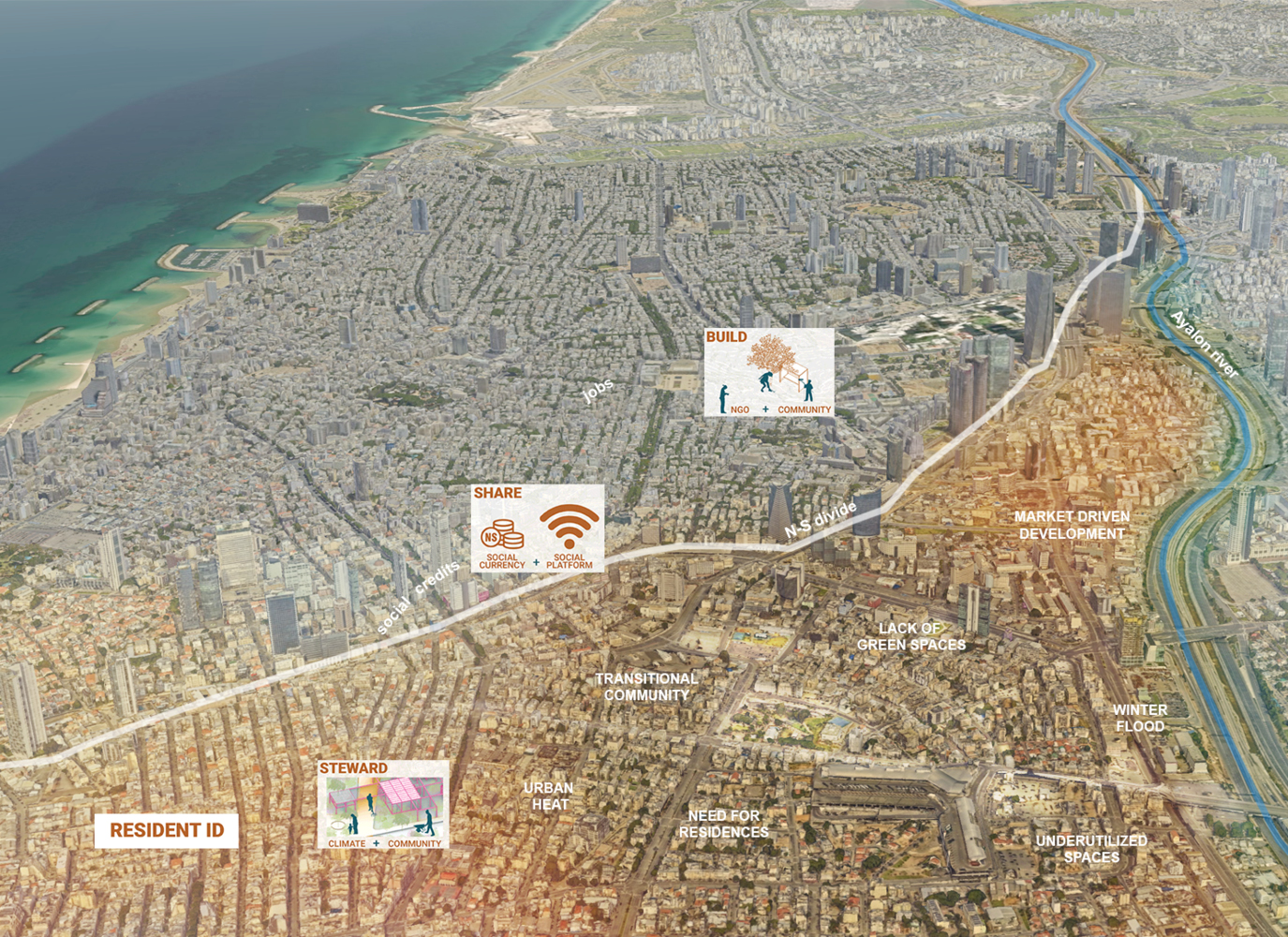
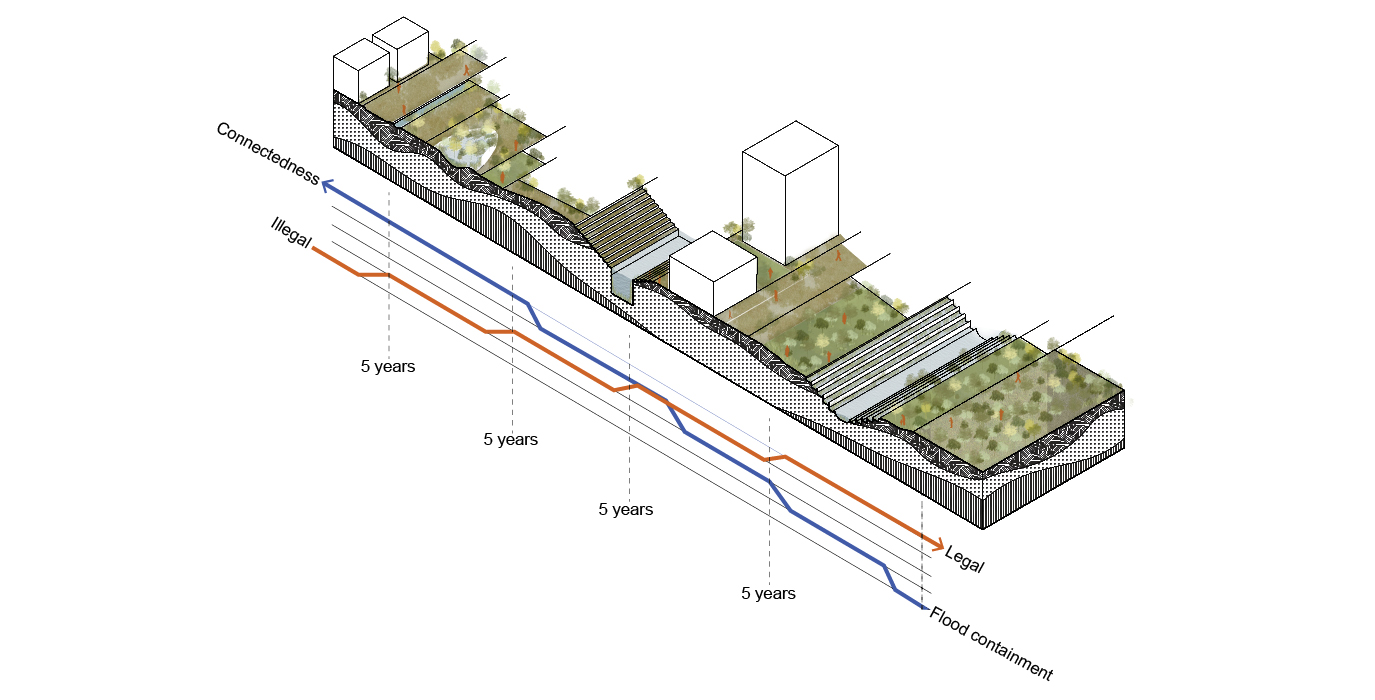
The transitional character of Neve Sha’anan is reflected in the concept of incremental building of the neighborhood. Inspired by Israeli shutters, we propose modular structures that will provide shade, program and shelter to the community. Neve Sha’anan Action Lab initiative will build incrementally, community-driven projects at three scales utilizing the pod toolkit. It will include interventions in between spaces, vacant/parking lots and a shelter in Levinsky Park that will empower the residents through social and economic integration.
Neve Sha’anan Action Lab. Here you can see some of the projects that we mentioned before happening around Levinsky Park, the heart of the neighborhood. The community will partner with local NGOs, which will be funded by the municipality and privates to develop a toolkit to rebuild the neighborhood, as shown in our diagram. A cooling hub and a marketplace as you can see in the axon are key spaces for this initiative. Levinsky Park is further celebrated by expanding its programs with a community shelter. The Action Lab will leverage social capital as an incentive for civic participation striving to bring positive change to the migrants quality of life.
Neve Sha’anan Action Lab. Here you can see some of the projects that we mentioned before happening around Levinsky Park, the heart of the neighborhood. The community will partner with local NGOs, which will be funded by the municipality and privates to develop a toolkit to rebuild the neighborhood, as shown in our diagram. A cooling hub and a marketplace as you can see in the axon are key spaces for this initiative. Levinsky Park is further celebrated by expanding its programs with a community shelter. The Action Lab will leverage social capital as an incentive for civic participation striving to bring positive change to the migrants quality of life.
 A series of community-driven projects carried out in Neve Sha’anan through the funding supported by the municipality (through Mesila) and grassroots organizations such as ONYA. Neve Sha’anan could be empowered by the people and for the people. The Action lab leverages social capital as an incentive to promote civic participation striving to bring positive change in the quality of life of the migrants.
A series of community-driven projects carried out in Neve Sha’anan through the funding supported by the municipality (through Mesila) and grassroots organizations such as ONYA. Neve Sha’anan could be empowered by the people and for the people. The Action lab leverages social capital as an incentive to promote civic participation striving to bring positive change in the quality of life of the migrants.
3 incremental projects propose to collaboratively daylight this neighborhood. Spaces in between buildings will serve as a platform for social interactions and celebrations in the community. Parking lots will be transformed to support programs that spur the local economy with a Neve Sha’anan Marketplace. Finally, Levinsky Park will be adapted to welcome community members in transition in a Shelter, where people will find a public kitchen, mental counseling services, and an ecological stewardship program to achieve resident status.

Looking closely at Neve Sha’anan, Daylighting people like Adissa, a woman from Neve Sha’anan highlighted in white will actively collaborate with the Action Lab in the in-between spaces to develop an intervention using the pod toolkit. While she participates in the neighborhood rebuilding, her baby will be cared for at the community daycare.
The in-between space will be used by residents for social interactions and celebrations. The modular pods are shaded structures for summer and will work as an extension of commerce and knitting workshops. Vertical wall gardens and soil patches will be used to grow herbs nurtured by the community. Through this proposal, the activities behind the facade will be showcased into the daily street life of Neve Sha’anan.
 In-between space intervention on Yesud-ha Ma’ala St. It includes community built pods and seating areas for neighborhood gatherings, small business expansions and gardens. Through this proposal, the activities behind the facade will have an opportunity to be showcased into the daily street life of Neve Sha’anan.
In-between space intervention on Yesud-ha Ma’ala St. It includes community built pods and seating areas for neighborhood gatherings, small business expansions and gardens. Through this proposal, the activities behind the facade will have an opportunity to be showcased into the daily street life of Neve Sha’anan.
For daylighting the neighborhood, parking lots will be transformed into shaded spaces for the community allocating programs to spur local economies, such as markets and food stalls. In the Neve Sha’anan Marketplace, Adissa can spend her social credits to buy her daily groceries. This empowering public space will provide free internet access, allowing the migrant workers to increase connectivity within the neighborhood as well as connecting residents to city-wide development opportunities.
Through this market intervention, the migrant workers and asylum seekers will be able to capitalize on their skill and market local “Made in Neve Sha’anan” products, promising a path to recognition and stability.
 Neve Sha’anan market intervention on HaGdud Hairvi St. Through this marketplace, the migrant workers and asylum seekers will be able to capitalize on their skill and market local “Made in Neve Sha’anan” products, in turn, promising a path to recognition and stability.
Neve Sha’anan market intervention on HaGdud Hairvi St. Through this marketplace, the migrant workers and asylum seekers will be able to capitalize on their skill and market local “Made in Neve Sha’anan” products, in turn, promising a path to recognition and stability.
Daylighting Ecology by utilizing community effort, we propose to build a transitional shelter in Levinsky Park. At the shelter, Adissa will join a soil rebuilding workshop, earning social credits and starting her path towards ecological stewardship. The shelter park holds a soft landscape for harvesting water.
 A transitional shelter is built by the community in Levinsky Park. The shelter park holds soft landscape for harvesting water. The community will build the shelter structure providing shade and fair jobs to the migrant workers. It includes facilities such as public kitchens, restrooms, spaces for mental health counseling, job training and an identification center.
A transitional shelter is built by the community in Levinsky Park. The shelter park holds soft landscape for harvesting water. The community will build the shelter structure providing shade and fair jobs to the migrant workers. It includes facilities such as public kitchens, restrooms, spaces for mental health counseling, job training and an identification center.
The built structure will provide shade and includes facilities such as public kitchens, restrooms, spaces for mental health counseling, job training and an identification center.
The job training center includes the provision of temporary jobs for building structures in the neighborhood. Climate stewards like Addisa, will recover the Ayalon Floodplain into a larger winter rainfall integration system for the whole city.

The public-private partnership will enable Neve Sha’anan Action Lab to train migrant workers and asylum seekers, becoming the neighborhood’s agents of change. The Action Lab will foster the community;s social capital and incentivize stewardship while improving quality of life of the residents of Neve Sha’anan. It empowers migrants to climb the ladder of permanence while celebrating their identity.
Empowering South Tel-Aviv Yafo through collaborative design. We propose a paradigm shift. Through Neve Sha’anan Action Lab, migrant workers and asylum seekers will be integrated in the city fabric by providing their services to the whole community. The collaborative spirit of this proposal will empower locals and newcomers alike in an innovative grassroots- public/private partnership. The climate stewards will transform Levinsky Street into an urban ecological corridor through Soil Rebuilding, Tree planting and ultimately, by recovering the Ayalon River. The migrant workers will acquire their residency in Tel Aviv. Through a strong workforce, the migrants, asylum seekers and locals will unbuild the Ayalon Highway and recover the river edge. The space will be transformed into an expanded floodplain for the winter, while the rest of the year will serve as a public water sensitive infrastructure for Tel Aviv Yafo. Through the Action Lab, the Neve Sha’anan community will render Tel Aviv-Yafo into a resilient and equitable city.
 The interventions of the Action Lab extend to the city, reaching the Ayalon floodplain and connecting the new pedestrian streets with Rothschild Boulevard. Through a strong workforce the migrants and asylum seekers will unbuild the Ayalon Highway and recover the river edger. The space will be transformed into an expanded floodplain during the winter, while the rest of the year will serve as a public water sensitive infrastructure for Tel Aviv Yafo.
The interventions of the Action Lab extend to the city, reaching the Ayalon floodplain and connecting the new pedestrian streets with Rothschild Boulevard. Through a strong workforce the migrants and asylum seekers will unbuild the Ayalon Highway and recover the river edger. The space will be transformed into an expanded floodplain during the winter, while the rest of the year will serve as a public water sensitive infrastructure for Tel Aviv Yafo.
 Unearthing Neve Sha’anan
Unearthing Neve Sha’anan